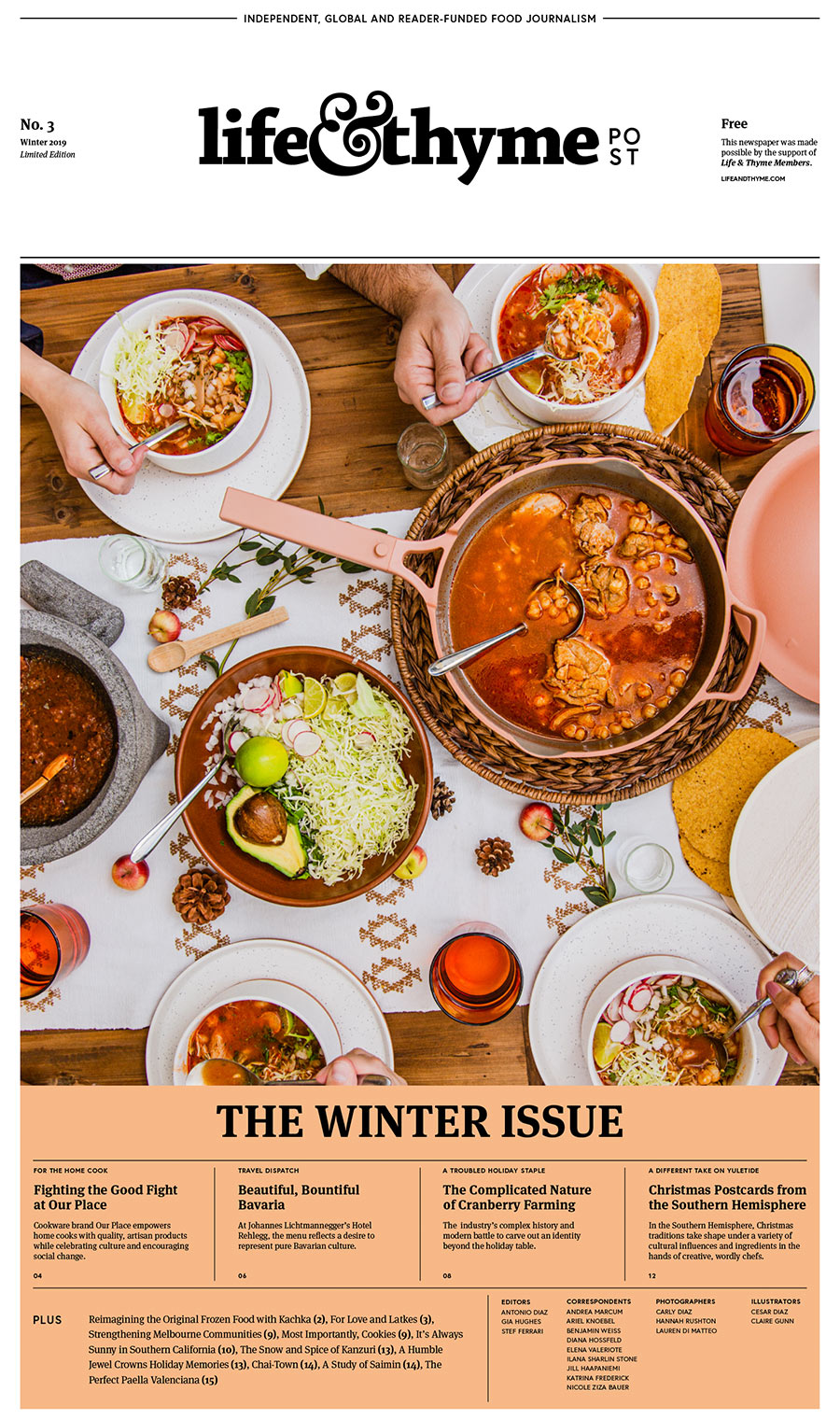
This story can also be found in The Winter Issue of Life & Thyme Post, our limited edition printed newspaper for Life & Thyme members.
“To start, put the pan down flat; if you don’t, the rice won’t cook evenly.” The instructions are simple, almost so much so that another chef might not bother to mention them when explaining the cooking process, but Executive Chef Luis Montesinos of Jaleo in Las Vegas, Nevada, knows the preparation of a perfect paella depends on giving the utmost attention to the fundamentals.
In conversation, Montesinos radiates a fun, friendly energy that resonates with the restaurant name Jaleo, which translates to “party” in Spanish and is associated with a rowdy, lively atmosphere. But he takes paella very seriously. “We used to have a leveler,” he says, as he describes the precise art of positioning a pan for paella.
Although it may seem unnecessary or even obsessive, this fixation on the first step of the paella process is indicative of Montesinos’ respect not only for the final dish, but for each of the individual ingredients that, when combined together in just the right way, become paella.
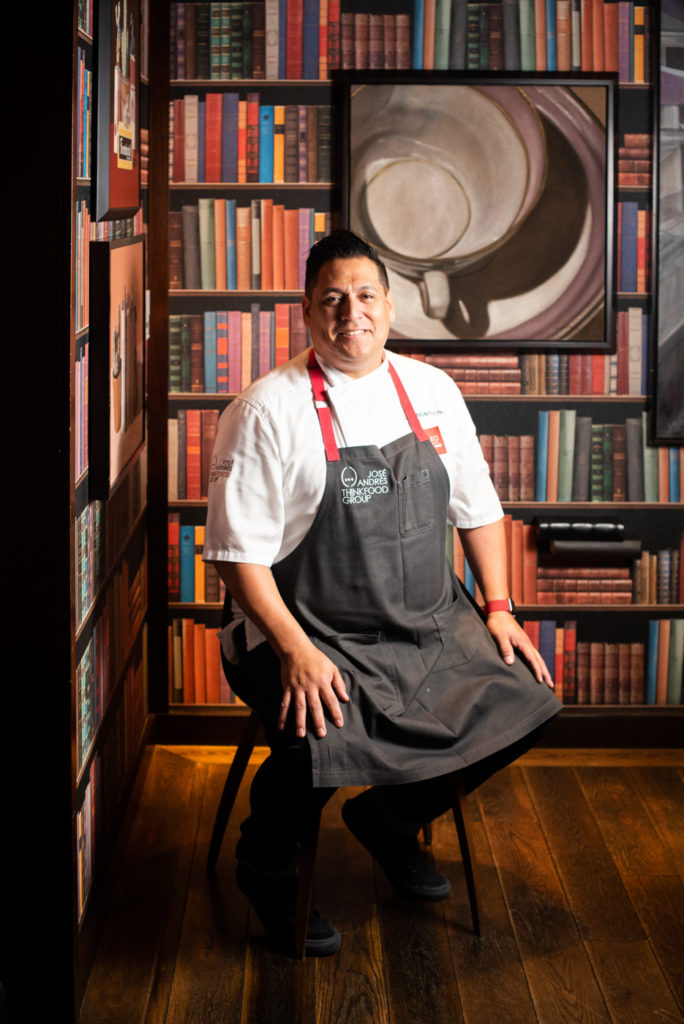
A self-declared “adopted Spaniard,” Montesinos (whose family is of Mexican heritage) came to appreciate and master the art of paella via an unlikely path. Growing up in Washington D.C. where his parents owned several restaurants, he was immersed in the restaurant business from a young age, but had no connections to Spanish food, nor any desire to work in a kitchen—at first. Around fifteen years ago, while serving as the front of house manager for one of his family’s restaurants, he realized he would rather be cooking.
“I knew I wanted to cook Mexican food and I thought: who’s going to do Mexican food right? And that’s when I went to Oyamel,” says Montesinos. Montesinos knew of Chef José Andrés and his numerous restaurants in the district, among which was a Mexican restaurant called Oyamel Cocina Mexicana. Montesinos believed it was there where he could gain a meaningful education in Mexican food. He adds, “I wanted to learn what made me and my background,” referring to his family’s Mexican roots.
Montesinos was first given a position waiting tables at Oyamel, but after six months he was offered the chance to work as a line cook. His passion and skill on the line soon earned him recognition and led him to move to Las Vegas where he initially worked at China Poblano, which offers a menu inspired by both Mexican and Chinese cuisines. By the time Montesinos was given the opportunity to transition to the position of executive chef at Jaleo (all of which are restaurants within Andrés’ ThinkFoodGroup), he had learned extensively not only about Mexican food, but also Andrés’ approach to food in general, and he was ready to embark on what he summarizes as “a journey of understanding paella.” Today the term paella is found on menus all over the world, usually in reference to a rice dish cooked in a pan with a variety of other ingredients. Most people would be surprised to discover that oftentimes the paella they’re ordering is a vague interpretation of the real thing. Montesinos explains there is a lot of contention over the meaning of the word paella, which has come to represent a lot more than its literal translation, “pan.”
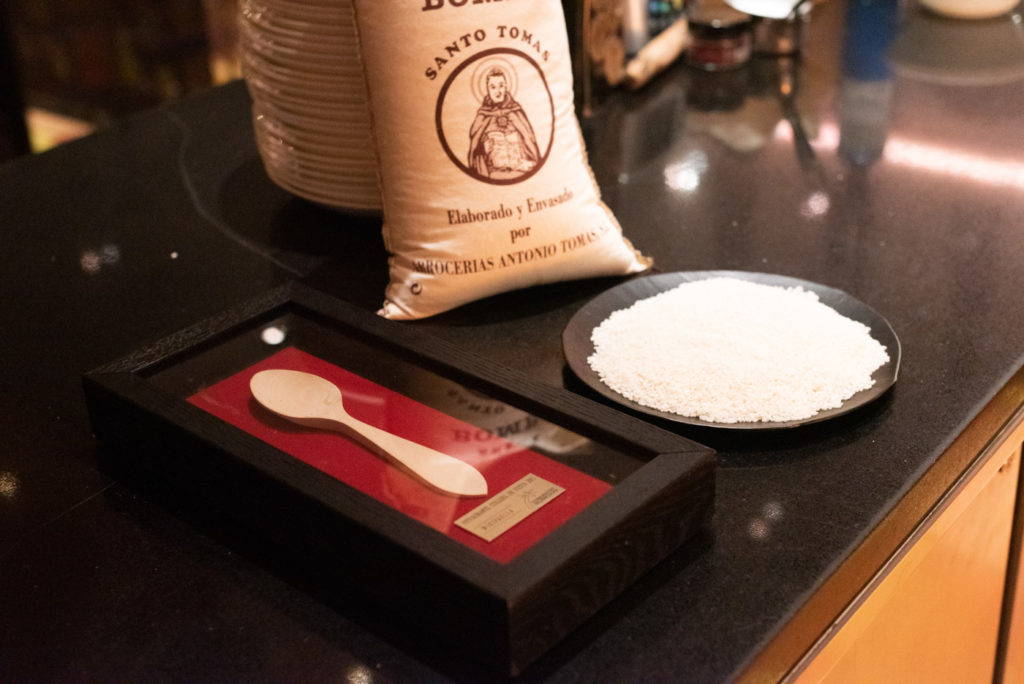
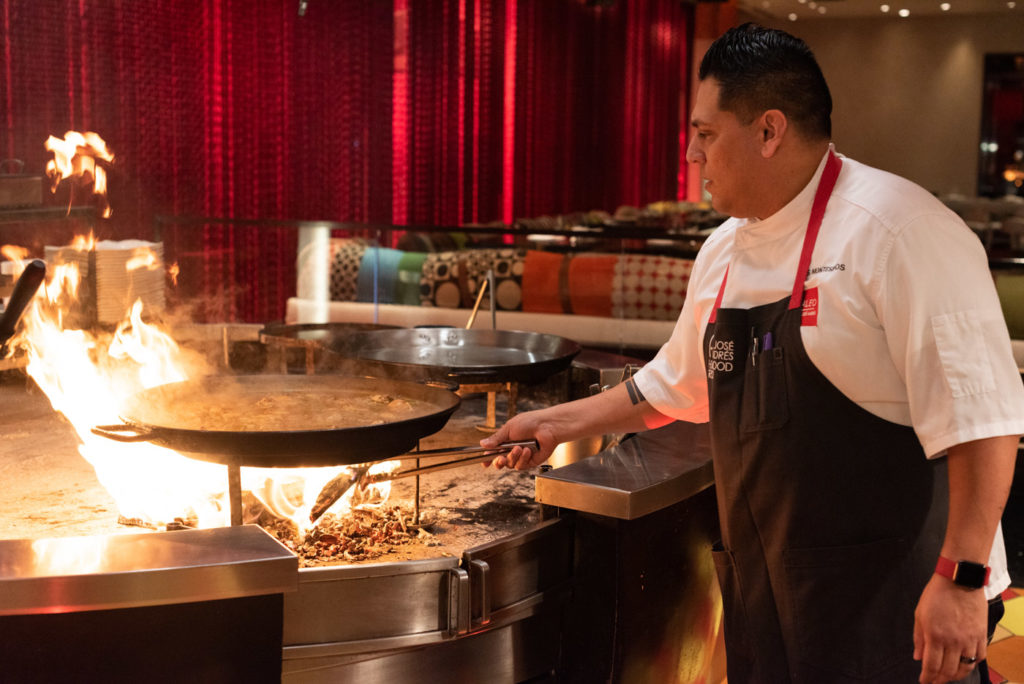
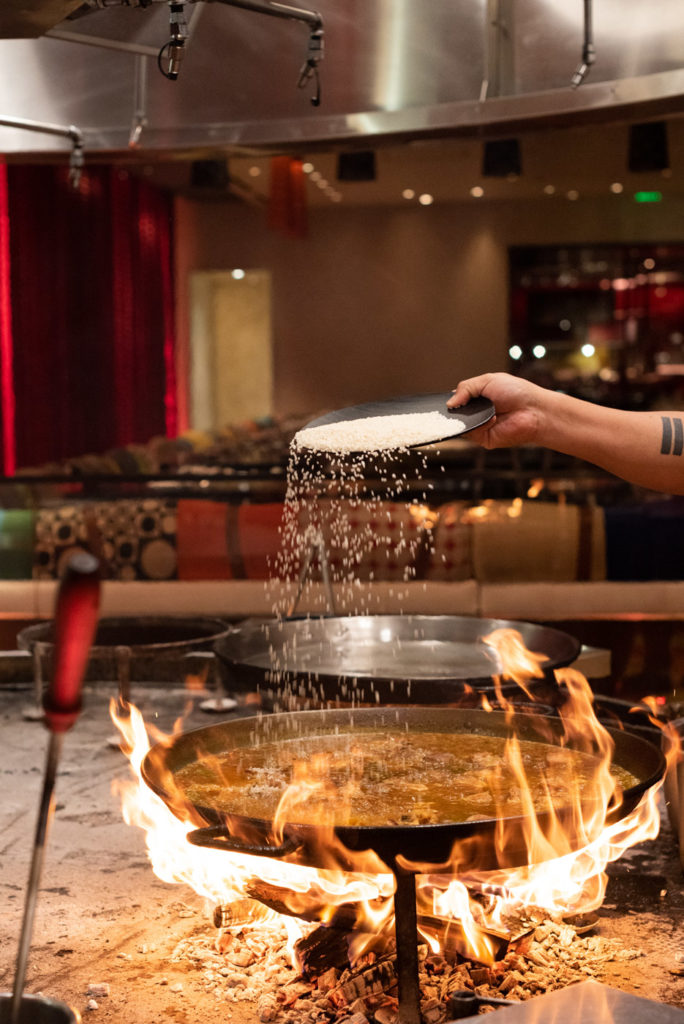
“The only traditional paella is paella Valenciana. Everything else is an arroz,” he says. For this reason, only one paella can be found on the menu at Jaleo. The other rice dishes are listed as arroz (rice).
A paella Valenciana (named for the city of Valencia) is composed of a few key ingredients: rice, chicken, rabbit, lima beans, Romano beans, tomatoes and saffron. At Jaleo, each of these ingredients is selected and prepared with care, but it is the most unassuming ingredient, rice, that plays a starring role.
Paella should be made with bomba, a short-grain variety of rice—which, along with just two other varieties of rice, is officially recognized as Arroz de Valencia (Rice of Valencia) according to the Protected Denomination of Origin (PDO) certification issued by the European Commission. According to certification regulations for Arroz de Valencia, this rice must be cultivated within a specific area known as the Community of Valencia. This region has been the hub of rice production in Spain for centuries.
Montesinos explains bomba rice has important historic and cultural value to the people of Valencia, but above all it is prized for its gastronomic potential. “With rice, the ratio is usually two-to-one (two cups of water to one cup rice). With bomba rice, it’s three-to-one,” he says. And according to Montesinos, this “enables the rice to absorb all that flavor without breaking. You do not want the rice to break. Once the rice is mushy, you’ve destroyed it.”
When it comes to preparing paella, creating the ideal environment for cooking the rice is essential. Montesinos has the privilege of working with a two million dollar paella pit at Jaleo that Andrés had expressly constructed to be placed in the center of the restaurant dining room. However, the method for cooking paella remains rudimentary.
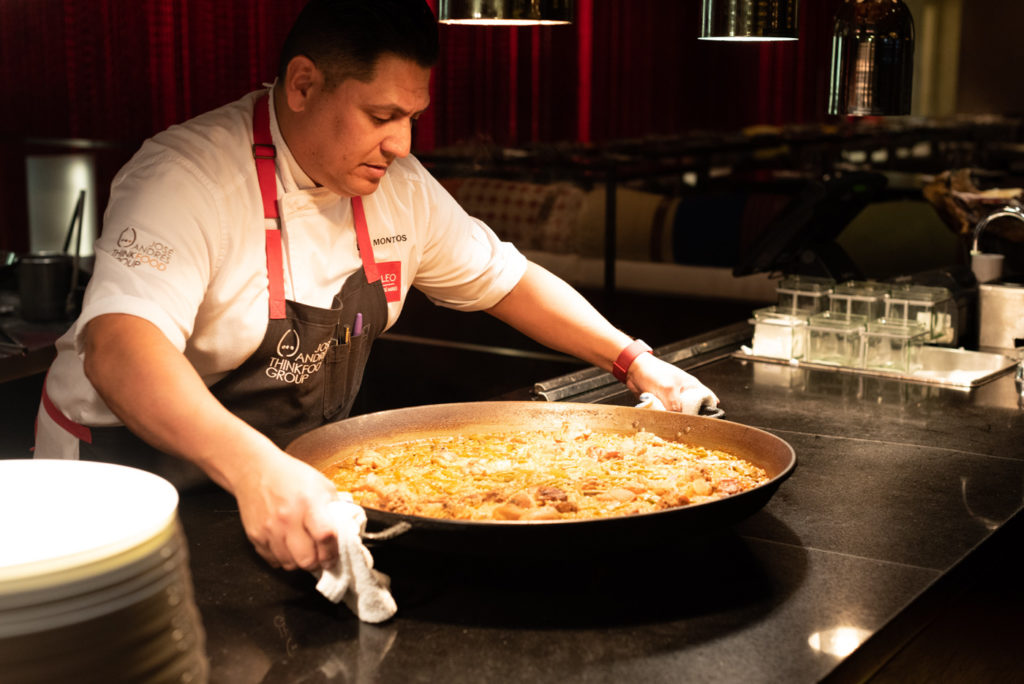
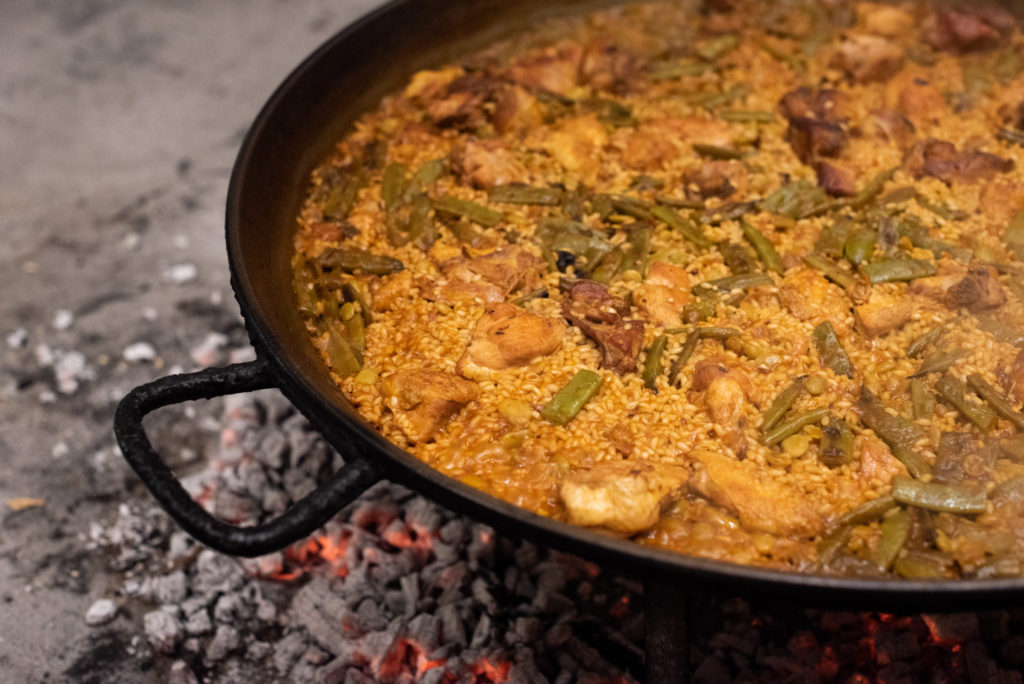
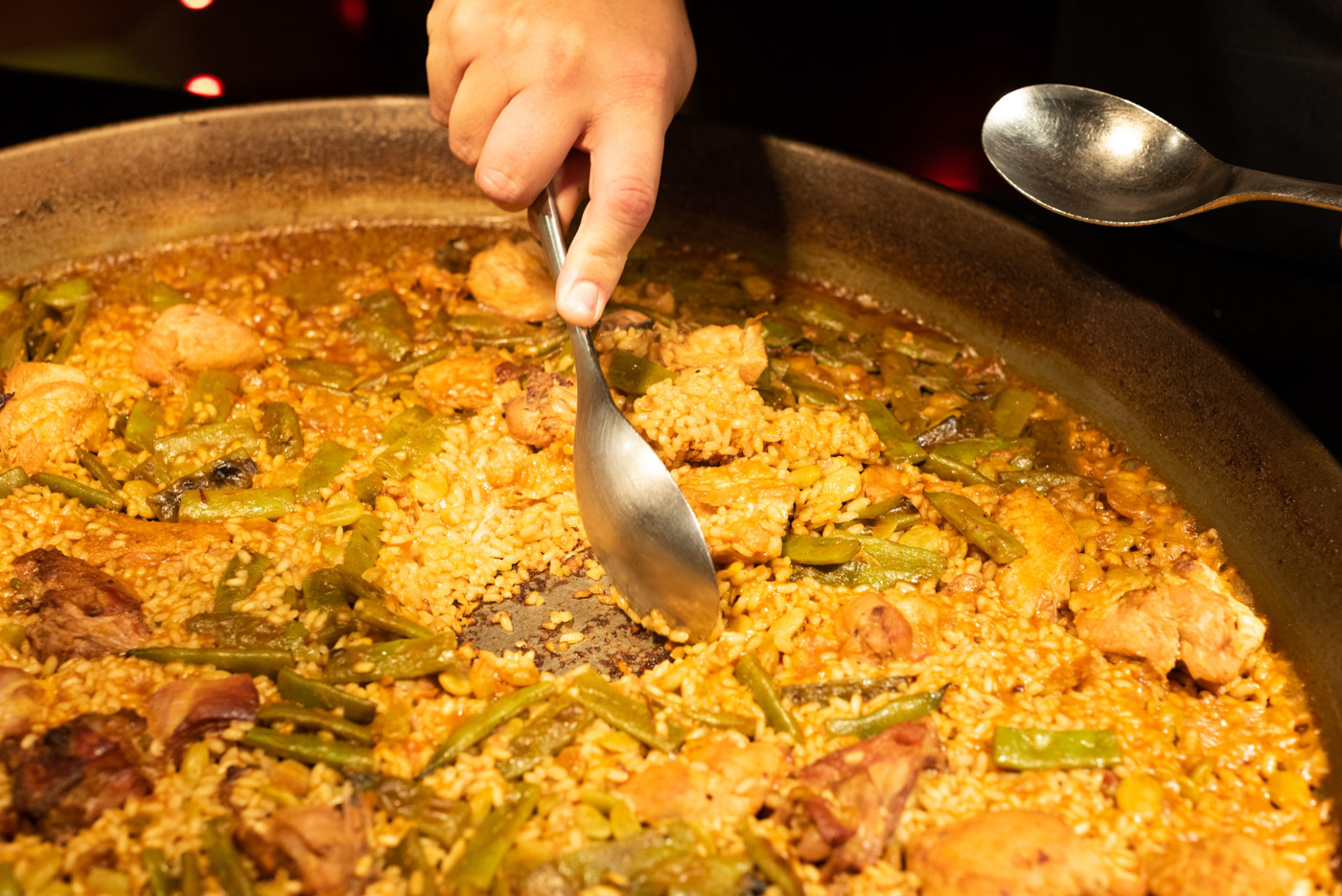
After assuring the pan is level, it is time to make a fire. Following tradition, Montesinos cooks his paella over orange wood, which must be carefully managed throughout the cooking process.
With the pan positioned and the fire started, all the paella ingredients must be prepared and placed so they are readily accessible. “Paella is all about timing,” says Montesinos, and the process moves at a swift pace in a particular order, lasting about forty-five minutes in total.
Montesinos describes it in a whirlwind of activity: “You’re searing the chicken, you’re searing the rabbit. After that, you’re moving everything to the side so it doesn’t overcook. You’re caramelizing the tomato. You’re sautéing the beans. Then you bring it up to a high heat and you’re adding the water. Once you add the water, you’re adding a little rosemary and saffron. Bring that to a boil. Let that reduce. At this point, you’re seasoning. You’re tasting, tasting, tasting, tasting because at the end of the day, if that stock doesn’t have any flavor, your rice doesn’t have any flavor. You add the rice and hit the timer. It’s seventeen minutes from when the rice goes in until the moment it’s done. At the thirteen-minute mark, you don’t touch the pan again. You continue to taste. You control the fire to make sure it’s cooking evenly. At the three-minute mark, there should be no fire, just embers. And at that point you should start listening for what I refer to as the snap, crackle and pop elements of the pan. This is when, as José will say, the paella will talk to you. And that’s when you know it’s ready.”
By allowing the paella to cook undisturbed in the latter part of the process, the rice achieves the ideal consistency. The rice in the center of the pan, in Montesinos’ words, has “a slight bite to it,” while the rice at the bottom achieves a “beautiful crunchiness.” The crispy rice layer is so highly coveted by paella-lovers that it even has its own name: socarrat.
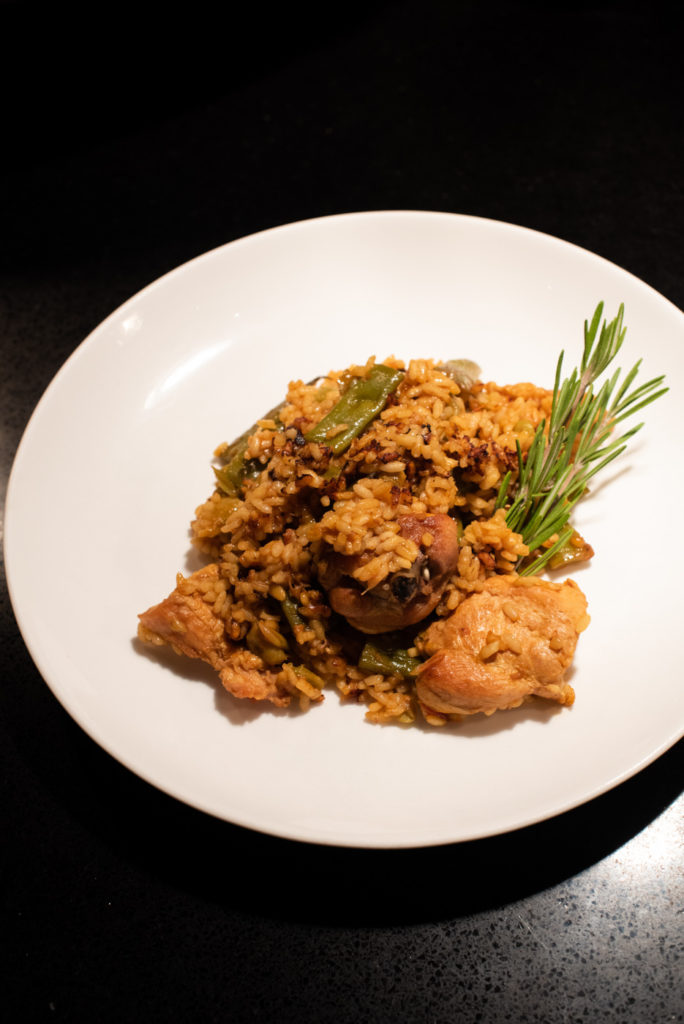
Montesinos reveals Andrés has a soft spot for socarrat and also acts as a firm defender of paella Valenciana. When a paella emoji featuring seafood was released several years ago, Andrés advocated for a recreation of the design to reflect the ingredients of the traditional Valenciana recipe. A new, more appropriate emoji was eventually developed, thanks in part to support from an organization known as Wikipaella, which promotes the paella Valenciana as the one and only authentic paella. In 2014, Jaleo was the first American restaurant (and is among just a handful other restaurants worldwide today) to be recognized by Wikipaella as an establishment that serves traditional paella Valenciana.
Wikipaella is not the only organization created for the purpose of protecting paella. As of this year, the City Council of Valencia has formed a commission to advocate for paella Valenciana as a candidate for the Intangible Cultural Heritage List of UNESCO. If successful, their work could enable paella Valenciana to join the Mediterranean Diet, the Art of the Neapolitan Piazzaiuolo, and just a handful of other food-related entries recognized for their international cultural value.
While Spaniards (especially native Valencians) are leading the charge in the movement to preserve the traditional recipe of paella Valenciana and award it its due recognition, chefs working outside of Spain, such as Montesinos, also play a key role. Through his respect for the ingredients and the process, Montesinos demonstrates it is possible to recreate a traditional paella Valenciana on foreign ground, and, more importantly, it is not necessary to be born in Spain to understand and feel passionately about paella.





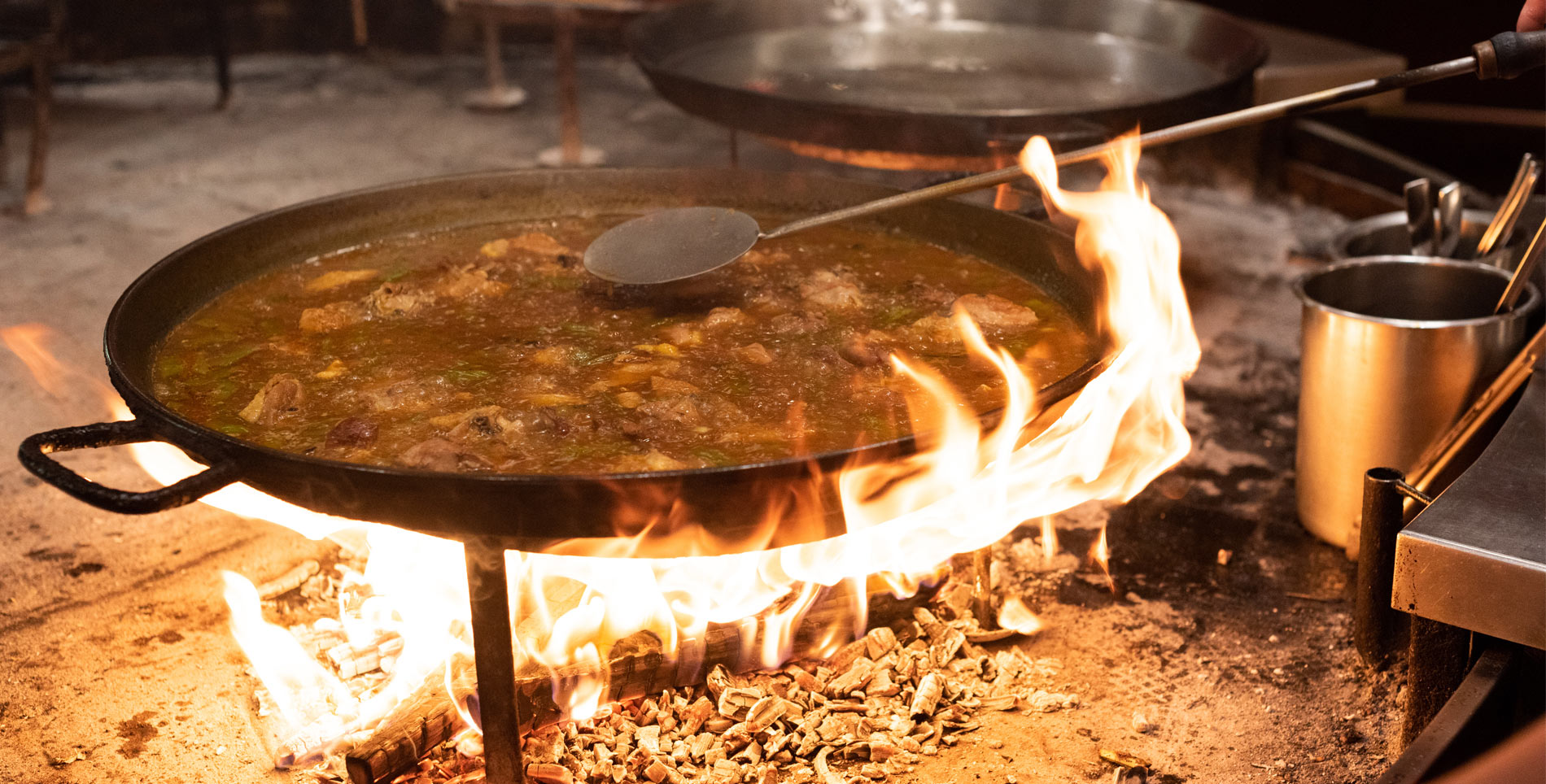

Our comments section is for members only.
Join today to gain exclusive access.